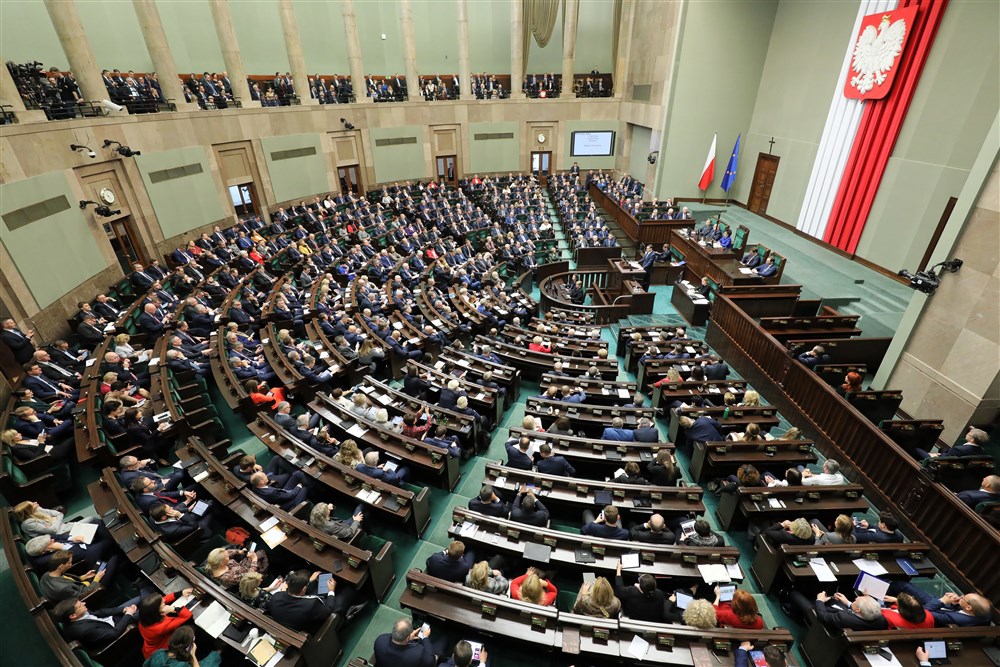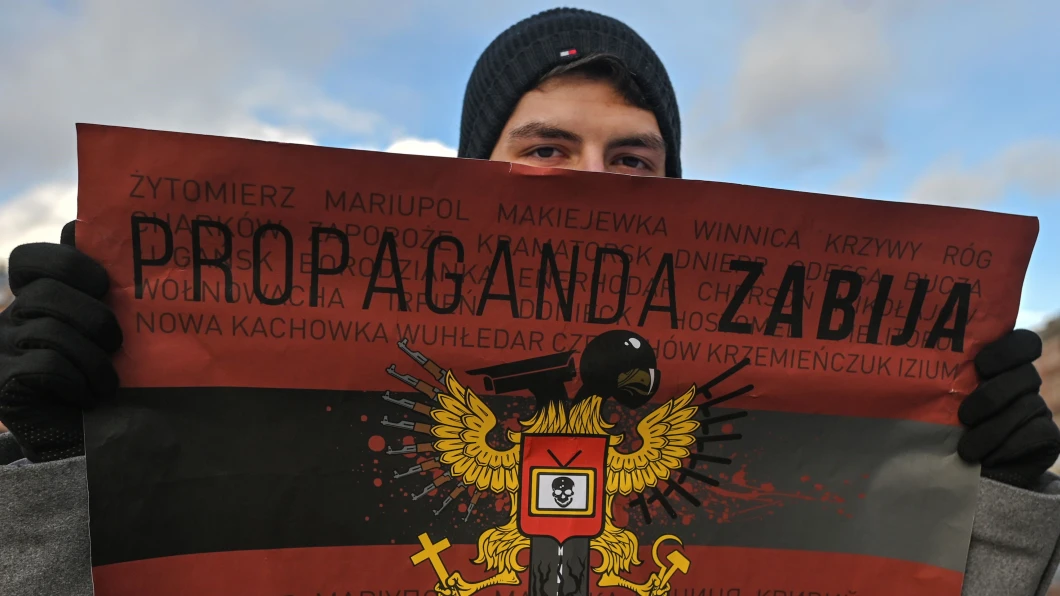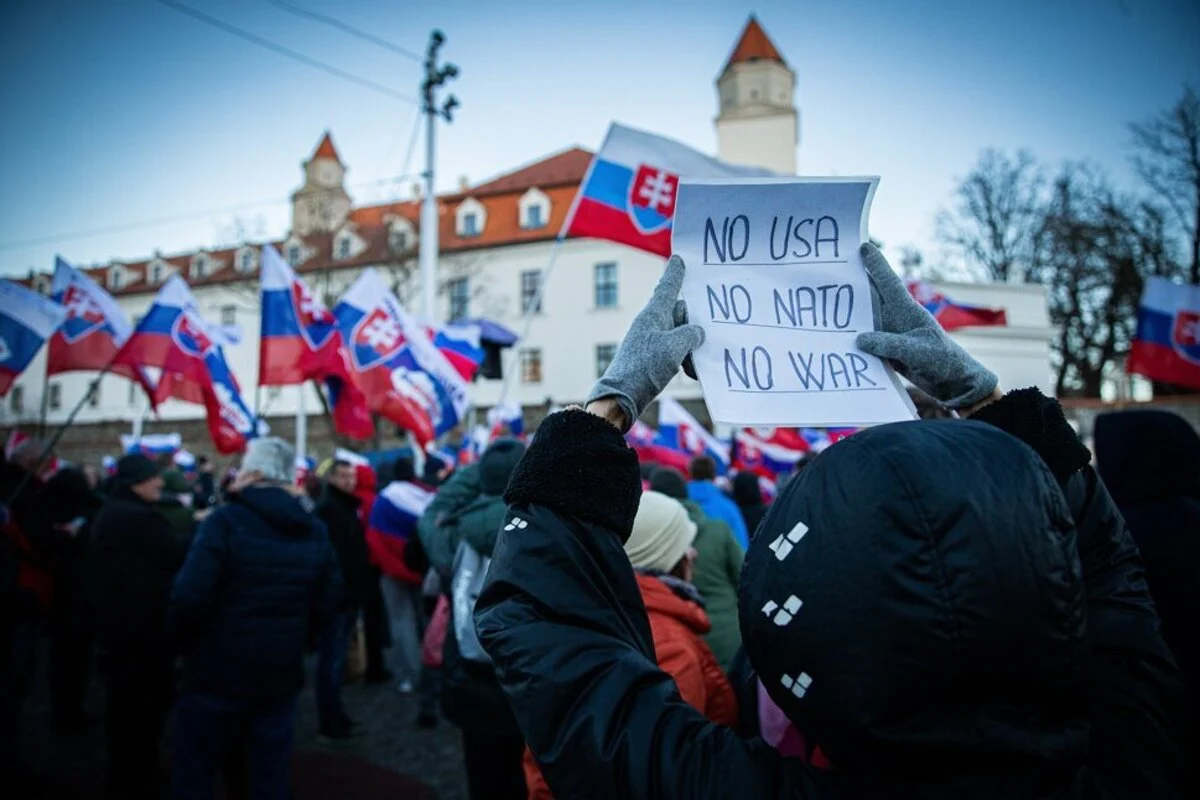Date: 7 August 2023 Author: Katja-Elisabeth Herrmann
Disinformation and Democracy: Navigating the 2023 Political Landscape in Central and Eastern Europe
The year 2023 is marked as a political year in history. The agenda for 2023 features various countries including Poland and Slovakia gearing up for crucial elections, poised to respond to both domestic and external pressures. After the round of elections in China, Spain, and Turkey, citizens’ willingness to preserve the status quo has found ground in society.

As in many countries, a combination of factors is likely to influence the outcome of the Polish and Slovak polls. This year’s elections will seek to address the discomfort in the electorate amidst rising prices of food and energy, and the democratic backsliding that has dominated public discourse in the previous years.
The rise of electoral disinformation is a reality that many European countries face during election times. As the Polish electorate is to gear up to elect their members of the Sejm and Senate representatives in late 2023 (autumn), Slovakia prepares for early parliamentary elections in late September 2023. In both instances, disinformation campaigns capitalize on societal vulnerabilities, polarizing electorates and undermining trust in media organizations. Identifying and countering false claims remains challenging, as V4 countries continue to struggle to secure sufficient means to effectively combat misleading information.
Reflecting on the Spanish elections in July, the far-right’s use of anti-immigrant rhetoric was often times exaggerated and taken out of context to suggest far wider problems. Feeding on a strongly polarised electorate, disinformation and misinformation in Spain originated endogenously – from within Spanish society. This is largely because information coming from the ‘outside’ is not regarded alike as information coming from within. More accurately characterized, Spanish society tends to be less critical of falsely constructed information – misinformation, rather than disinformation – misleading factual information. This is largely because manipulated context circulates in media outlets more freely rather than factually incorrect information.
Oftentimes, individuals’ willingness to disseminate disinformation bears some important lessons both with regard to the goals and the stakes involved in following such conduct. For instance, capitalizing on frustrations and fears, the dissemination of fake news has sought to erode public trust in media organizations. At the same time, this double-edged sword has hindered the media’s ability to inform voters with veridic and factual information.
When identifying and removing false claims, V4 countries’ limited means to pursue false or misleading information can result in significant setbacks. In 2021, Slovakian initiatives after the pandemic sought to address disinformation about vaccination. However, the existing institutional framework was underfunded and had little to no experienced staff to present a viable strategy. The new center to combat hybrid threats hosted by the Ministry of Interior is just beginning to modernize at the perceived threat of Russian disinformation encroaching further on its territory. Despite this, a poll conducted by the Centre for Democracy & Resilience GLOBSEC continues to evince the older generation in Slovakia is generally more pro-Russian and less pro-Western.
As parliamentary elections approach, the production of disinformation has turned into a profitable business model for disinformation trolls in the V4 region. Particularly in Poland, disinformation campaigns seek to capitalize on the existing “Symmetrism” in society – a term usually employed to criticize those who refuse to take sides and who accept the status quo and entailing a negative approach. Between the ruling party Law and Justice (PiS), and the opposition Civic Platform (PO), symmetric stands out as a vulnerable point that can be exploited in an increasingly tremulous political landscape for the electorate.
The Slovak disinformation scene tends to take a different turn. The current Interim Prime Minister Mr Ľudovít Ódor, is independent from any political party. However, the Ordinary People and Independent Personalities (OĽaNO) is expected to form a coalition government and recommend the next Primer Minister subject to Presidential approval.
Against this backdrop, Slovak parliamentary elections are expected to fuel and intensify the dissemination of misinformation and disinformation regarding the electorate process, the candidates, and the issues that are set forth in each of the parties’ agendas including the war in Ukraine.
Since the beginning of the war, Slovakia provided MiG-29 jets to Ukrainian forces, in addition to a robust package of ammunition for fighter jets, warm clothes for the military, and other equipment, including 300 power generators.[1] However, Russian disinformation campaigns are succeeding at polarizing society and risking continued support for Ukraine. In this regard, Slovakia could become a fertile ground for the dissemination of Russian anti-NATO and anti-Euro narratives to thrive. The same poll conducted by GLOBSEC accounts for some 50 percent of Slovaks saying the United States is a security threat to their country.
As Russian influence creeps across Europe and beyond, ideological imperialism has prevailed in eastern countries that hold a strong affiliation with ‘Ostalgia’. In Slovakia, the German term Ostalgia is strongly embedded within society and best represents the nexus between the combination of the words Ost (in German “east”) and nostalgia.[2] Slovaks rank among the highest pro-Russian supporters in the EU – even before the war in Ukraine began.[3] But even so, support for left-wing parties also applies to the wider European arena; for example, to Greece’s Syriza and Spain’s Podemos.[4]
How successful can Russian disinformation be in Poland?
In sharp contrast with Spain, V4 countries experience both endogenous and exogenous inputs of disinformation – from outside and from within the domestic sphere. Let’s break down Russia’s cascading narratives employed to disseminate disinformation.
Essentially, Russian disinformation coming from outside the domestic sphere seeks to serve its own interests at the expense of objective truth and disrupt societal trust. Thus, discrediting a fact or an event to serve a larger purpose. Internally, a trustless society will catalyze misinformation waves, amplifying the effects of disinformation practices.
In Poland, the presented nostalgia has little to no effect after the 24th of February 2021. Polish perception of its own security has overtaken any other external sentiment for which the sources of disinformation currently present emanate more from within the domestic society. Thus, disinformation in Poland adopts a more “Anti” rhetoric narrative striving to foment sentiments of opposition towards a given entity. In Poland, the “Anti” rhetoric narrative is often targeted against EU policies and migration and less about NATO as it would have been in previous years.
How to reduce the amount of disinformation in the media?
“While in some countries extreme ideology weakens resilience, in others low education can have such an effect.”[5] Certainly, digital literacy is the main recourse to defend against disinformation. Unfortunately, digital literacy alone cannot by itself disarm disinformation. A complete disarmament would entail rooting out the very phenomena that give wrong facts their momentum. In the case of Slovakia, a strong Ostalgia resonates with the population’s identity and history.
Until recently, it was thought that debunking alone was a sufficient solution to disarm disinformation, but this has proven to be a flawed strategy. An old vodka in a new bottle like Russian disinformation in CEE, does not seize to be sold as vodka. Russian information warfare has extended to the confines of the domestic electorate that – as an exogenous force – has influenced and shaped citizens’ perceptions about sensible topics such as foreign policy, energy security, inflation, and migration.
Debunking gives a rebuttal to false messages. However, the task of debunking becomes more challenging when the original context in which the facts are accurate is later modified or altered. The digital battlefield has witnessed these and newer forms of disinformation tools and tactics combined. Similarly, new tools for old tactics are being constantly employed and adapted to serve particular purposes.
Undoubtedly, increasing polarisation, rising inflation, and foreign politics are but some of the themes resonating across the different electorate ballots in Europe. The future of disinformation in Central and Eastern Europe is once again left for the public to decide whether to succumb to the overconsumption of misleading information or remain critical of what is displayed online.
Like in CEE, disinformation is also likely to play a major role in The United States and the Parliamentary elections in the European Union scheduled for 2024. What 2023 has taught is no different than the lesson that ought to be learned during the pandemic years. Disinformation takes a central role in society that feeds on the increasing consumption of information with its own market and it is up to the public to decide and manage this consumption.
[1] Euromaidan Press, “Slovakia to send Ukraine ammunition for aircraft, 300 generators” (December 8, 2022).
[2] Michal Bokša, “Russian Information Warfare in Central and Eastern Europe: Strategies, Impact, Countermeasures” The German Marshall Fund of the United States (2019).
https://www.gmfus.org/sites/default/files/Russia%20disinformation%20CEE%20-%20June%204.pdf
[3] In 2020, Globsec conducted a poll on the Slovak public’s reactions to pro-Kremlin narratives and found that 78% of the public in the country believed they were traditional Slavic brothers with Russians, while seeing Russia as a key political and military force on the continent; retrieved from Hajdari Una, “Russian Embassy in Slovakia uses Facebook to push propaganda. Why are so many Slovaks buying it? Euronews (March 29, 2023). https://www.euronews.com/2023/03/29/russian-embassy-in-slovakia-uses-facebook-to-push-propaganda-why-are-so-many-slovaks-buyin.
[4] Bokša page 3.
[5] Edda Humprecht, Frank Esser, Peter Van Aelst, Anna Staender & Sophie Morosoli (2023) The sharing of disinformation in cross-national comparison: analyzing patterns of resilience, Information, Communication & Society, 26:7, 1342-1362, DOI: 10.1080/1369118X.2021.2006744
Sources:
1. Bokša Michal, “Russian Information Warfare in Central and Eastern Europe: Strategies, Impact, Countermeasures” The German Marshall Fund of the United States (2019).
https://www.gmfus.org/sites/default/files/Russia%20disinformation%20CEE%20-%20June%204.pdf
2. Euromaidan Press, “Slovakia to send Ukraine ammunition for aircraft, 300 generators” (December 8, 2022). https://euromaidanpress.com/2022/12/08/slovakia-will-send-ukraine-ammunition-for-planes-and-300-generators/
3. Hajdari Una, “Russian Embassy in Slovakia uses Facebook to push propaganda. Why are so many Slovaks buying it? Euronews (March 29, 2023). https://www.euronews.com/2023/03/29/russian-embassy-in-slovakia-uses-facebook-to-push-propaganda-why-are-so-many-slovaks-buyin
4. Hajdu Dominika, “Globsec Trends 2022 – Slovakia” Globsec (2022).
https://www.globsec.org/sites/default/files/2022-11/GLOBSEC%20Trends%202022%20Slovakia_0.pdf
5. Humprecht Edda, Frank Esser, Peter Van Aelst, Anna Staender & Sophie Morosoli,“The sharing of disinformation in cross-national comparison: analyzing patterns of resilience” Information, Communication & Society, 26:7, 1342-1362 (2023).
6. Lewkowicz Łukasz, “Slovakia: an unstable public support for Ukraine and the West” Institute of Central Europe (October 28, 2022).
https://ies.lublin.pl/en/comments/slovakia-an-unstable-public-support-for-ukraine-and-the-west/
The project is co-financed by the Governments of Czechia, Hungary, Poland and Slovakia through Visegrad Grants from International Visegrad Fund. The mission of the fund is to advance ideas for sustainable regional cooperation in Central Europe.

Support Us
If content prepared by Warsaw Institute team is useful for you, please support our actions. Donations from private persons are necessary for the continuation of our mission.
All texts published by the Warsaw Institute Foundation may be disseminated on the condition that their origin is credited. Images may not be used without permission.
















